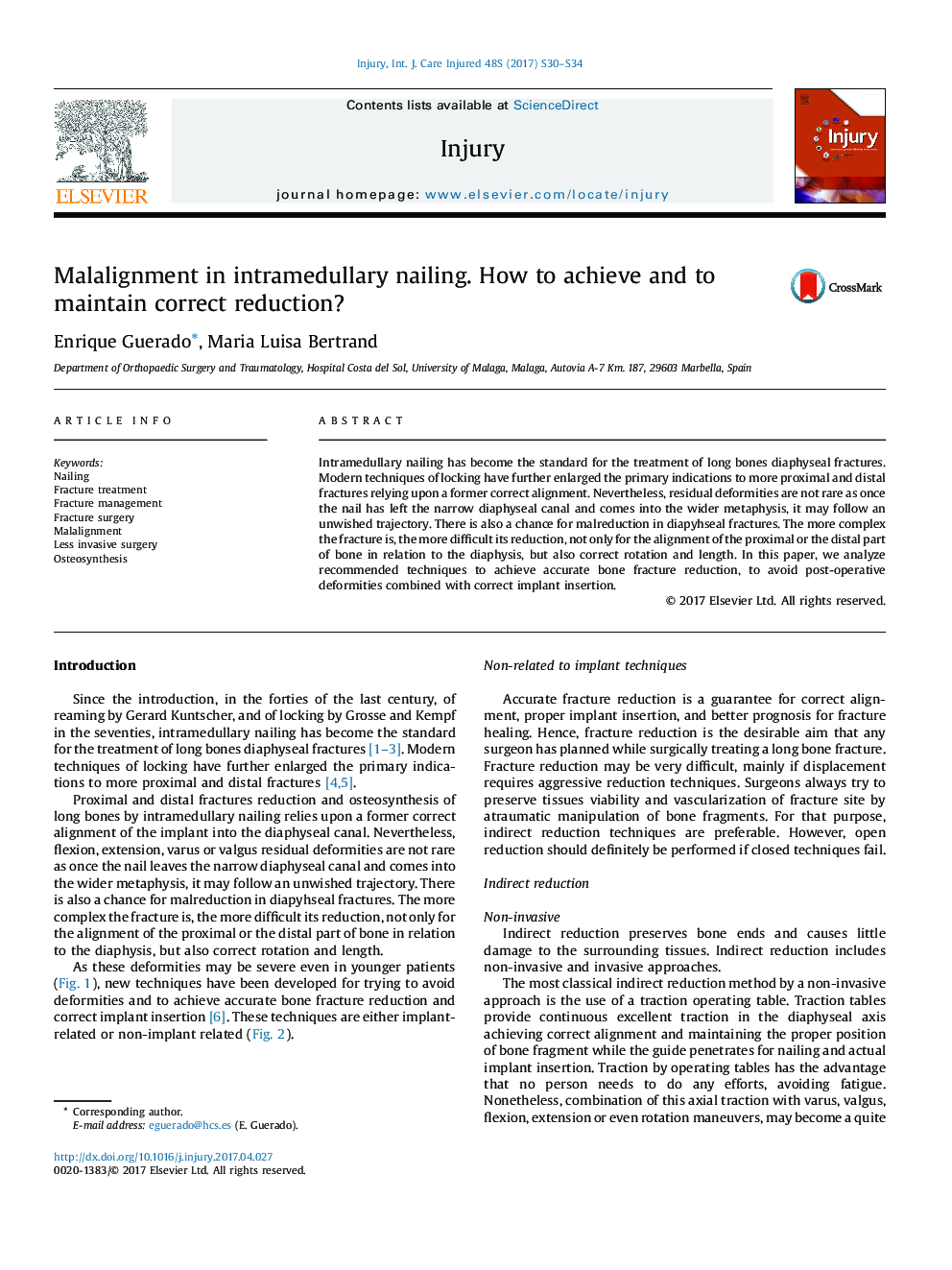| Article ID | Journal | Published Year | Pages | File Type |
|---|---|---|---|---|
| 5652630 | Injury | 2017 | 5 Pages |
Intramedullary nailing has become the standard for the treatment of long bones diaphyseal fractures. Modern techniques of locking have further enlarged the primary indications to more proximal and distal fractures relying upon a former correct alignment. Nevertheless, residual deformities are not rare as once the nail has left the narrow diaphyseal canal and comes into the wider metaphysis, it may follow an unwished trajectory. There is also a chance for malreduction in diapyhseal fractures. The more complex the fracture is, the more difficult its reduction, not only for the alignment of the proximal or the distal part of bone in relation to the diaphysis, but also correct rotation and length. In this paper, we analyze recommended techniques to achieve accurate bone fracture reduction, to avoid post-operative deformities combined with correct implant insertion.
